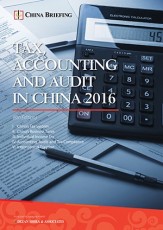FDI in China’s Green Buildings – a Solution for its Affordable Housing Problems?
By Samuel Wrest
In July this year, China’s State Council released data showing that the country is aiming for the construction of 3,500 new urban areas by 2030, with a collective capacity of 3.4 billion residents – roughly half of the world’s population. Although met with criticism for being unrealistic, the target underlines a very real problem that the Middle Kingdom is currently facing.
As a result of China’s rapid urbanization – 56 percent by the close of 2015 – demand for affordable housing in the country’s sprawling metropolises has quickly outstripped supply. 60 percent of households in cities with a population of more than seven million are unable to afford basic housing at market rates, according to research from McKinsey. The issue looks set to worsen in the future, with Chinese cities now regularly topping global rankings for home price growth.
It is therefore no surprise that the Chinese government is looking to increase and make more affordable the supply of urban housing, reflected in an investment outlay of RMB 1.54 trillion (US$236.9 billion) in its affordable housing program last year – but it isn’t any kind of home that the country is targeting. Alongside plans to boost the supply of housing overall are plans to increase the supply of ‘green’ buildings, primarily to cut carbon gas emissions and help meet ambitious clean energy targets. The country’s New Type Urbanization Plan for 2014-2020 mandates that the share of green buildings in new construction rise from two percent in 2012 to a massive 50 percent by 2020.
The case for green affordable housing in China then becomes clear. Because most Chinese domestic construction companies are still unfamiliar with green materials, there is a gap in the sector that foreign firms with the necessary expertise are well placed to bridge. And while some may worry that constructing housing that is both green and affordable may not yield a return on investment, China has a strong incentive framework in place both nationally and regionally to ensure that investments made are worthwhile.
![]() RELATED: Pre-Investment and Entry Strategy Advisory from Dezan Shira & Associates
RELATED: Pre-Investment and Entry Strategy Advisory from Dezan Shira & Associates
Defining ‘green’ buildings in China
China classifies green buildings as those that can conserve resources (such as energy, land, and water), protect the environment, and reduce pollution, and the country uses ratings to measure a building’s effectiveness in meeting these standards. While there are a range of rating systems from different countries that qualify, the two most dominant are China’s own Green Building Evaluation Standard (GBES), and the U.S.’s Leadership in Energy and Environmental Design (LEED). Foreign companies entering the market are therefore advised to plan their housing around one of these two systems.
National incentive framework for green housing
China’s preferential policies for green housing are a primary driver behind their commercial viability. Buildings that are rated 2-Star in an applicable classification system will enjoy a subsidy of RMB 45 per sq. m, while 3-Star buildings qualify for RMB 80. The potential benefits of these subsidies shouldn’t be underestimated. According to statistics on the incremental cost of Chinese green buildings, subsidies given by the national government to 2-Star buildings covered up to 68 percent of the incremental cost for residential buildings and 44 percent of public buildings, respectively, while the subsidy for 3-Star buildings covered up to 66 percent and 50 percent.
Additionally, China’s corporate income tax (CIT) law (中华人民共和国企业所得税法) stipulates that costs incurred while conducting R&D for green buildings in China can be deducted from a company’s CIT payment. This means that the cost of the R&D will be reduced from the firm’s declared profits, resulting in less being applicable for CIT.
Local incentives
Most local governments across China have separate preferential policies that can stack on top of the country’s national incentives, expediting the investment process and increasing the investment returns for foreign companies. Western China, for example, offers a reduced CIT rate of 15 percent for companies that build green housing in the region, while Shanxi province provides a streamlined application process and additional subsidies of between RMB 10 and 20 per sq. m, depending on the rating attained.
Similar incentives exist across a range of first to third-tier cities in the country. Many of these cities have separate green building targets in place, funds to encourage the investment that is required to meet these targets, and even form a link between the dual needs for green buildings and affordable housing. In Dongguan in Guangdong province, for instance, an RMB 10 million (US$ 1.5 million) special fund has been set up to support green building projects, while Heze in Shandong province mandates that 30,000 sq. m of new construction in each of its counties be green and that this should partly be used to provide affordable housing.
![]() RELATED: Tax and Compliance Services from Dezan Shira & Associates
RELATED: Tax and Compliance Services from Dezan Shira & Associates
Viability of green affordable housing and future outlook
The chief concern with green affordable housing in China is the comparatively higher upfront cost. Green buildings require high-tech applications that are typically more expensive than traditional building materials. In order for such buildings to be constructed and still have a scalable impact on China’s housing supply problems, they will have to by necessity be low-cost.
However, research has shown that state-level fiscal measures and local level regulations can help make green affordable housing viable. China has both of these in place with its extensive incentive framework, making green housing construction comparable to, and potentially even cheaper than, conventional housing. Moreover, the costs associated with green construction are now significantly less than in the past, with experienced constructors able to build housing at a roughly equivalent price to conventional homes.
Green affordable housing is therefore not only possible in the Chinese market, but potentially profitable for foreign investors, and the need for this type of housing is set to only grow in the future. In addition to China’s ambitious target that green buildings comprise 50 percent of new construction by 2020 are the general sustainability goals laid out in its 13th Five Year Plan, which stipulates that clean energy form 20 percent of China’s energy mix before 2030. In order for China to both meet these targets and effectively house its urbanizing population, green and affordable housing will have to be at the forefront of construction in the mid to long-term future.
|
Asia Briefing Ltd. is a subsidiary of Dezan Shira & Associates. Dezan Shira is a specialist foreign direct investment practice, providing corporate establishment, business advisory, tax advisory and compliance, accounting, payroll, due diligence and financial review services to multinationals investing in China, Hong Kong, India, Vietnam, Singapore and the rest of ASEAN. For further information, please email china@dezshira.com or visit www.dezshira.com. Stay up to date with the latest business and investment trends in Asia by subscribing to our complimentary update service featuring news, commentary and regulatory insight.
|

 Establishing & Operating a Business in China 2016
Establishing & Operating a Business in China 2016
Establishing & Operating a Business in China 2016, produced in collaboration with the experts at Dezan Shira & Associates, explores the establishment procedures and related considerations of the Representative Office (RO), and two types of Limited Liability Companies: the Wholly Foreign-owned Enterprise (WFOE) and the Sino-foreign Joint Venture (JV). The guide also includes issues specific to Hong Kong and Singapore holding companies, and details how foreign investors can close a foreign-invested enterprise smoothly in China.
 Tax, Accounting, and Audit in China 2016
Tax, Accounting, and Audit in China 2016
This edition of Tax, Accounting, and Audit in China, updated for 2016, offers a comprehensive overview of the major taxes that foreign investors are likely to encounter when establishing or operating a business in China, as well as other tax-relevant obligations. This concise, detailed, yet pragmatic guide is ideal for CFOs, compliance officers and heads of accounting who must navigate the complex tax and accounting landscape in China in order to effectively manage and strategically plan their China-based operations.
 An Introduction to Doing Business in China 2016
An Introduction to Doing Business in China 2016
Doing Business in China 2016 is designed to introduce the fundamentals of investing in China. Compiled by the professionals at Dezan Shira & Associates in June 2016, this comprehensive guide is ideal not only for businesses looking to enter the Chinese market, but also for companies who already have a presence here and want to keep up-to-date with the most recent and relevant policy changes
- Previous Article Evaluating the Changes Made to China’s FIE Establishment Procedures
- Next Article Name and Shame: Employers’ Labor Law Violations to be Made Public in China









